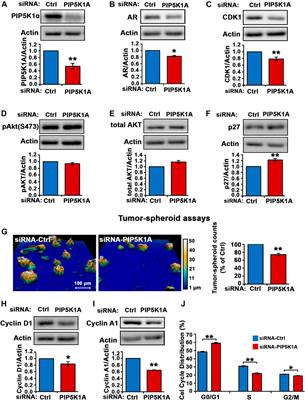Customer Publication

PIP5K1α is Required for Promoting Tumor Progression in Castration-Resistant Prostate Cancer
Journal: Frontiers in Cell and Developmental Biology (2022)
Institution: Department of Molecular Biology, Sweden
Research Areas: Cancer research
Cell Lines: LNCaP C4-2, DU145 (prostatic carcinoma cell lines)
Summary: PIP5K1α has emerged as a promising drug target for the treatment of castration-resistant prostate cancer (CRPC), as it acts upstream of the PI3K/AKT signaling pathway to promote prostate cancer (PCa) growth, survival and invasion. However, little is known of the molecular actions of PIP5K1α in this process. Here, we show that siRNA-mediated knockdown of PIP5K1α and blockade of PIP5K1α action using its small molecule inhibitor ISA-2011B suppress growth and invasion of CRPC cells. We demonstrate that targeted deletion of the N-terminal domain of PIP5K1α in CRPC cells results in reduced growth and migratory ability of cancer cells. Further, the xenograft tumors lacking the N-terminal domain of PIP5K1α exhibited reduced tumor growth and aggressiveness in xenograft mice as compared to that of controls. The N-terminal domain of PIP5K1α is required for regulation of mRNA expression and protein stability of PIP5K1α. This suggests that the expression and oncogenic activity of PIP5K1α are in part dependent on its N-terminal domain. We further show that PIP5K1α acts as an upstream regulator of the androgen receptor (AR) and AR target genes including CDK1 and MMP9 that are key factors promoting growth, survival and invasion of PCa cells. ISA-2011B exhibited a significant inhibitory effect on AR target genes including CDK1 and MMP9 in CRPC cells with wild-type PIP5K1α and in CRPC cells lacking the N-terminal domain of PIP5K1α. These results indicate that the growth of PIP5K1α-dependent…